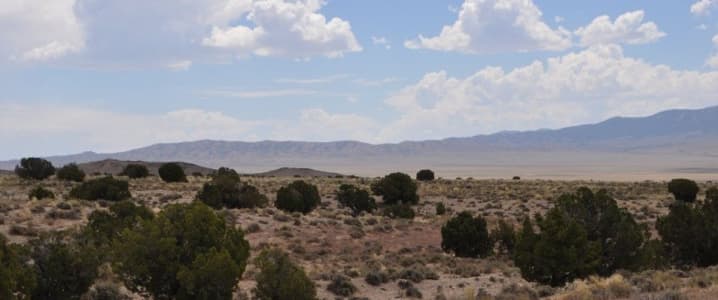Most of the giant oil fields on earth, ''elephants'' are deposited in passive margin shelves like the Paleozoic passive margin shelf of the Great Basin of western Utah and eastern Nevada. These shelf Paleozoic sediments thicken from several thousand feet east of the Utah Hingeline in central Utah to more than forty-two thousand feet in central Nevada (Figure 1). Many of the age-equivalent shales of North America were deposited in this stratigraphic wedge. However, the Great Basin shales are not just as organically rich as the other shales but they are many times thicker. The eastern Great Basin, covering 71 million acres, is the last underexplored basin in North America that likely contains giant oil and gas fields.
(Click to enlarge)
Figure 1. U.S. Oil shales
Bakken age-equivalent Mississippian-Devonian Pilot oil shale is up to 900 feet thick in the Great Basin in contrast with the Bakken shale that is only 150 feet thick or less in North Dakota. Oil bleeds out of some outcrops of tight sandstone interbedded in the Pilot when it is freshly broken. Oil seeps occur in organic rich Marcellus age-equivalent Middle Devonian shales in Nevada outcrops. One well, with gas shows, cut eight thousand feet of Utica age-equivalent Ordovician Vinini shale and was still in Vinini at total depth. These Ordovician shales are so organic rich that they have been retorted for oil.
Organic rich Great Basin Mississippian Antler foreland basin oil shales are measured in thousands of feet in contrast to the age-equivalent Barnett shale that is measured in only hundreds of feet in Texas. Analyses of shale samples combined with the shale thickness indicate that the shales potentially have enough organic content to literally generate trillions of barrels of oil (Figure 2).
(Click to enlarge)
Figure 2 Total Organic Content of the Antler Basin
Some of that oil generated soon after thrust loading in the Late Cretaceous and Early Tertiary. The hydrocarbons then migrated through thousands of feet of subthrust Jurassic sandstone to oil traps along the leading edge of the western North American Cordillera thrust belt in central and northern Nevada and onto the giant folds in the Colorado Plateau of eastern Utah (Figure 3). Subsequent erosion by the Colorado River removed the structural seals allowing most of the hydrocarbons to escape leaving only a residue of thirteen billion barrels of oil in the Utah tar sands. Related: Canadian Oil Is Building A Wall And Mexico Is Paying For It
As oil migrated from central Nevada to Utah it filled up each fold to spill point before flowing over to the next structure to the east. Each of the structures could contain a billion or more barrels of oil or oil equivalent. Fortunately, erosion by the Colorado River has exposed thousands of feet of subthrust Jurassic sandstone that forms the cores of mountains in the Las Vegas area. Two wells, penetrating thousands of feet of Precambrian and/or Early Paleozoic rocks confirm that subthrust Mesozoic rocks occur below the thrust sheets west of the leading edge of the thrust belt (Figure 3). These evidences suggest that thick subthrust Mesozoic sandstones may also core some, if not many, of the 165 untested structures north of the Colorado River. The subthrust sandstones are the reservoir rock that has already produced trillions of cubic feet of gas and hundreds of millions of barrels of oil along the leading edge of the thrust belt.
(Click to enlarge)
Figure 3: Cordillera thrust belt
During the downturn of oil prices in the 1980’s, the principals at XTO raised $35 million, hired experience geologists, acquired key leases, and developed data. Several years later Exxon needed the leases, data and expertise that XTO had so Exxon bought XTO for over $40 billion.
And while the world seems awash in oil today, lack of exploratory success and falling capex in the oil and gas industry could make the great basin an interesting play when the current oil glut turns into a supply deficit.
By Alan Chamberlain for Oilprice.com
More Top Reads From Oilprice.com:
- Can Saudi Arabia Scramble Out Of The Pit It Dug for Itself?
- Iraq Threatens To Sink OPEC Deal
- Why The Peak Oil Argument Refuses To Die




















